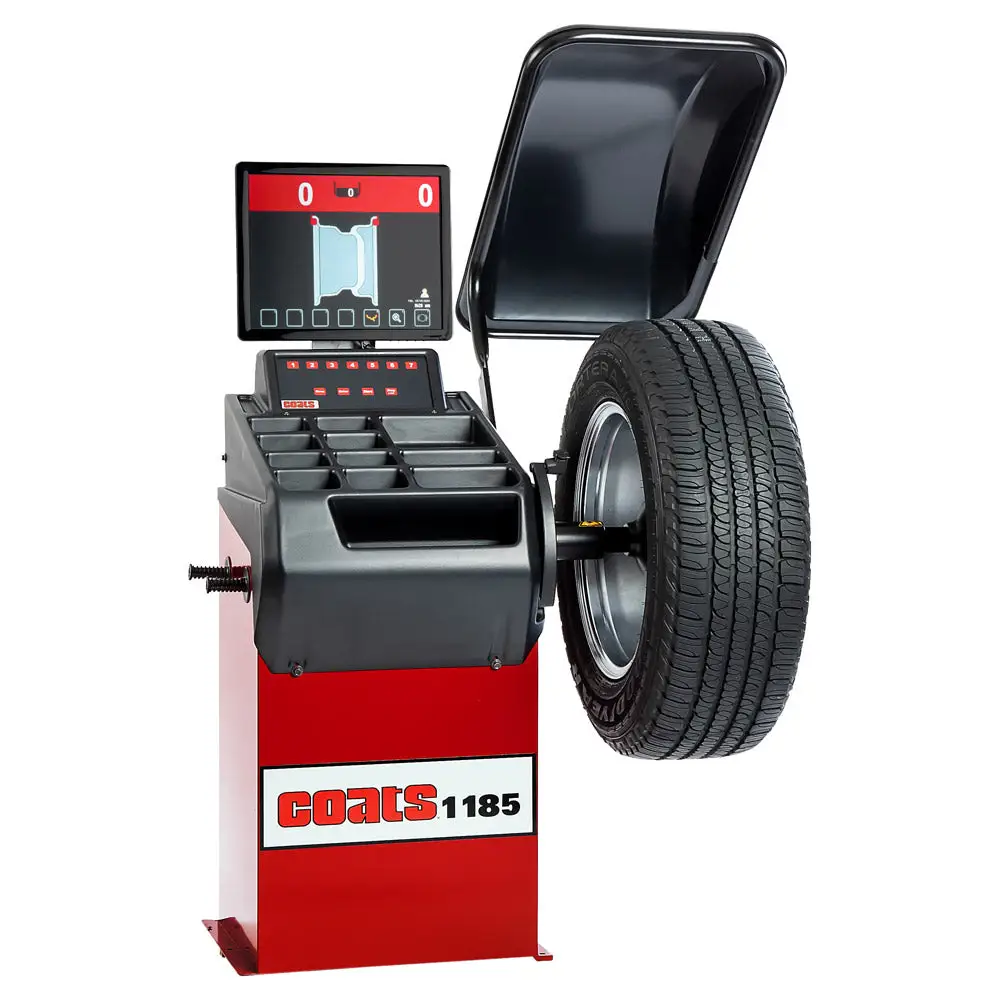In the world of automotive maintenance, precision and efficiency are paramount. Whether you’re a professional mechanic or a DIY enthusiast, ensuring that your vehicle’s tires are properly balanced is crucial for safety, performance, and longevity. One of the key tools in achieving this balance is the wheel balancer. In this comprehensive guide, we’ll delve into the essentials of wheel balancers, helping you understand how to select the right one and use it effectively in your tire shop or garage.
Understanding Wheel Balancers:
Wheel balancers are specialized machines designed to measure and correct imbalances in tires and wheels. These imbalances occur when the weight distribution around the wheel and tire assembly is uneven, leading to vibrations, uneven tire wear, and compromised handling. A wheel balancer works by detecting these imbalances and recommending or applying weights to counteract them, resulting in a smoother ride and better overall performance.
Types of Wheel Balancers:
- Static vs. Dynamic Balancing:
- Static wheel balancers are basic machines that identify imbalances by measuring the distribution of weight around the tire and wheel assembly while stationary. They’re suitable for basic balancing tasks but may not address all types of imbalances.
- Dynamic wheel balancers, on the other hand, are more advanced and capable of identifying and correcting imbalances both statically and dynamically. They spin the wheel assembly at high speeds to simulate real-world conditions, providing more accurate results and better overall balance.
- Manual vs. Automatic Balancers:
- Manual wheel balancers require more hands-on operation, with the user responsible for inputting data and making adjustments based on the machine’s readings.
- Automatic wheel balancers streamline the process by automating many of the steps involved, including data input, measurement, and weight application. They’re ideal for high-volume tire shops or those looking to maximize efficiency.
- Portable vs. Stationary Balancers:
- Portable wheel balancers are compact and lightweight, making them suitable for mobile mechanics or those with limited space. They may sacrifice some features and accuracy compared to their stationary counterparts.
- Stationary wheel balancers are larger, more robust machines designed for heavy-duty use in tire shops or garages. They offer greater precision and often come equipped with additional features and capabilities.
Selecting the Right Wheel Balancer:
When choosing a wheel balancer for your tire shop or garage, several factors should be taken into consideration:
- Workload and Volume:
- Consider the volume of balancing tasks you’ll be handling on a regular basis. For high-volume shops, investing in an automatic or stationary balancer with fast cycle times and advanced features may be more cost-effective in the long run.
- Space and Portability:
- Evaluate the available space in your shop or garage and whether portability is a priority. Portable balancers are ideal for smaller spaces or mobile operations, while stationary models offer greater stability and functionality but require more room.
- Budget and Features:
- Determine your budget and weigh it against the features and capabilities you require. While basic static balancers may be more affordable, investing in a dynamic or automatic model can provide greater accuracy and efficiency, ultimately saving time and money. To ensure optimal performance and durability in your wheel balancing tasks, exploring the range of Hofmann Equipment could provide you with advanced options tailored to meet the demands of modern tire service professionals.
Using a Wheel Balancer:
Once you’ve selected the right wheel balancer for your needs, it’s essential to understand how to use it effectively:
- Preparation:
- Begin by ensuring that the wheel balancer is properly calibrated and adjusted according to the manufacturer’s instructions. Inspect the tire and wheel assembly for any damage or irregularities that may affect the balancing process.
- Mounting the Wheel:
- Securely mount the wheel assembly onto the balancer’s spindle, ensuring that it’s centered and balanced. Use the appropriate adapters and cones to accommodate different wheel sizes and types.
- Measurement and Analysis:
- Input the necessary parameters, such as wheel diameter, width, and distance to the inner and outer edges of the rim, into the balancer’s computer system. Start the balancing process, allowing the machine to spin the wheel assembly and measure any imbalances.
- Correction:
- Based on the balancer’s readings, determine the location and amount of weight needed to correct the imbalance. Apply adhesive or clip-on weights to the designated areas on the wheel rim, following the manufacturer’s recommendations.
- Verification:
- After applying the weights, recheck the balance to ensure that the imbalances have been adequately corrected. Make any necessary adjustments and retest if required.
- Final Inspection:
- Once the wheel assembly is properly balanced, inspect it visually and manually to confirm that everything is secure and in good condition. Reinstall the wheel onto the vehicle, ensuring proper torque specifications are followed.
Conclusion:
Wheel balancers are indispensable tools in any tire shop or garage, enabling professionals and enthusiasts alike to achieve precise balance and optimal performance for their vehicle’s tires and wheels. By understanding the different types of wheel balancers available, selecting the right one for your needs, and mastering the balancing process, you can ensure safer, smoother rides and extend the lifespan of your tires. Invest in quality equipment, stay informed about industry advancements, and prioritize regular maintenance to keep your wheel balancer operating at its best for years to come.

